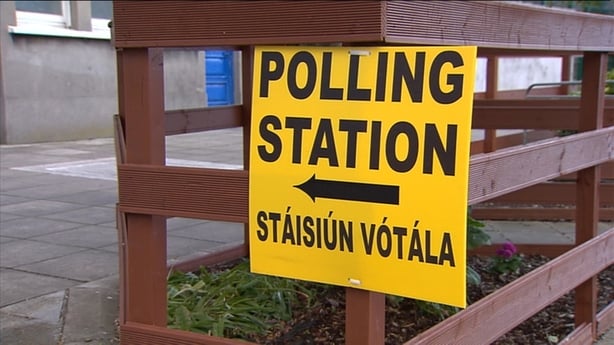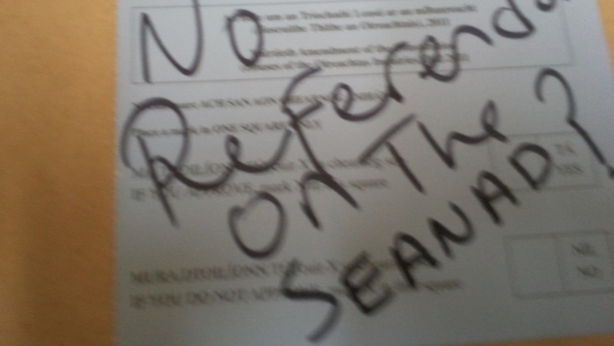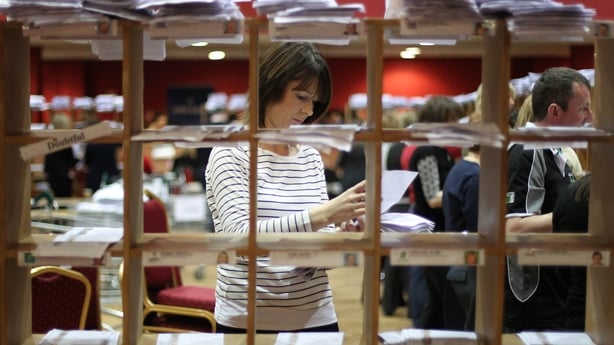Confused about the voting process? RTÉ's Peter Farrell has you covered.
As most people know, tomorrow is polling day in the General Election.
While most people will know how to vote, and what way they want to vote, some may have questions of how to go about it.
As a result, we’ve compiled a non-exhaustive list of some of the queries people may have about the process.
First up, how do I know if I have a vote?
In order to vote, you must be on the Register of Electors. Once you are registered, a polling card will be sent to your address. This contains much of the information you need in order to vote. If you have not received your polling card but think you should have done so, you can visit checktheregister.ie
OK, where do I need to go?
 There are thousands of polling stations located all over the country, but each voter is allocated one specific centre to attend. This information is contained on your polling card, and can also be obtained from your local council.
There are thousands of polling stations located all over the country, but each voter is allocated one specific centre to attend. This information is contained on your polling card, and can also be obtained from your local council.
Any particular time?
The polling stations open at 7am and will stay open until 10pm. They are manned by returning officers who are there all day, so try to be nice to them!
Right, I have directions – do I need to bring anything?
Yes – although you do not need a polling card to vote, there’s no harm in bringing it with you. You should also bring a form of identification. An extensive list of the accepted forms of ID is available online, but a passport, driving licence or photo student ID is your best bet.
You do not need to bring a pen, pencil, magic marker or anything else to write with – this will be provided at the polling centre.
And after that I vote?
Correct. Once you present yourself at the polling station and they confirm you are who you say you are you will be given the ballot paper and directed to a polling booth.
Once inside, you can vote by writing a large 1 in the box beside the candidate of your choice. This is your first preference vote.
You can then continue to vote for other candidates by writing 2, 3, 4 etc in the boxes beside their names, in the order of your choosing. You are free to give a preference to every candidate on the ballot paper, or just one.
You should not write anything else on the ballot paper or your vote may be spoilt.
Spoilt?

A spoilt vote is one that is deemed inadmissible as someone has written something on the ballot paper. This vote will not be included when the votes are being counted.
What will the ballot paper look like?
Essentially, it will be a sheet of paper with the names of each candidate, their picture and party affiliation, if they have any. If they are not affiliated to a party they will be listed as Independent.
There will be a box beside each candidate – this is where you mark your vote.
What do I do with the paper after I vote?
Once you have marked your choices on the paper, you must put it in the sealed ballot box in the polling station in order for it to be counted.
Where does counting take place?
 After polling closes at 10pm, all of the ballot boxes are taken to the various count centres around the country. Many constituencies have their own count centre, but some centres, like those in Dublin and Cork, will deal with a number of different constituencies.
After polling closes at 10pm, all of the ballot boxes are taken to the various count centres around the country. Many constituencies have their own count centre, but some centres, like those in Dublin and Cork, will deal with a number of different constituencies.
When will I know the results?
The counting starts at 9am on Saturday. As there are differing amounts of candidates competing for differing numbers of seats around the country, there is no exact answer to this question, but you can follow all of the counts on RTÉ News to keep up to date!
How do they decide who wins?
Ireland operates a system called Proportional Representation, where candidates have to reach a certain number of votes, called a quota, to be elected. You can find more about this here.
...and what then?
Once all the seats are filled, the various political parties and Independents begin the fun job of forming a government. There are a number of ways this can be done. If one party secures an outright majority of seats in the Dáil, they can form a government on their own.
However, this is unlikely so it is more likely a number of parties will come together and attempt to combine their seats so they reach 79 altogether – the magic number to form a government.
Anything else?
While you might be feeling very democratic, resist the urge to take selfies in the polling station, or a picture of your polling card for that matter. While you might get heaps of likes on Facebook and Instagram, you might also invalidate your vote and land yourself a fine in the process.
If you must take a snap, do so outside the polling station – personally I’d be a fan of the (heavily filtered) duck face selfie with the “Polling Station” sign in the background, but each to their own.

